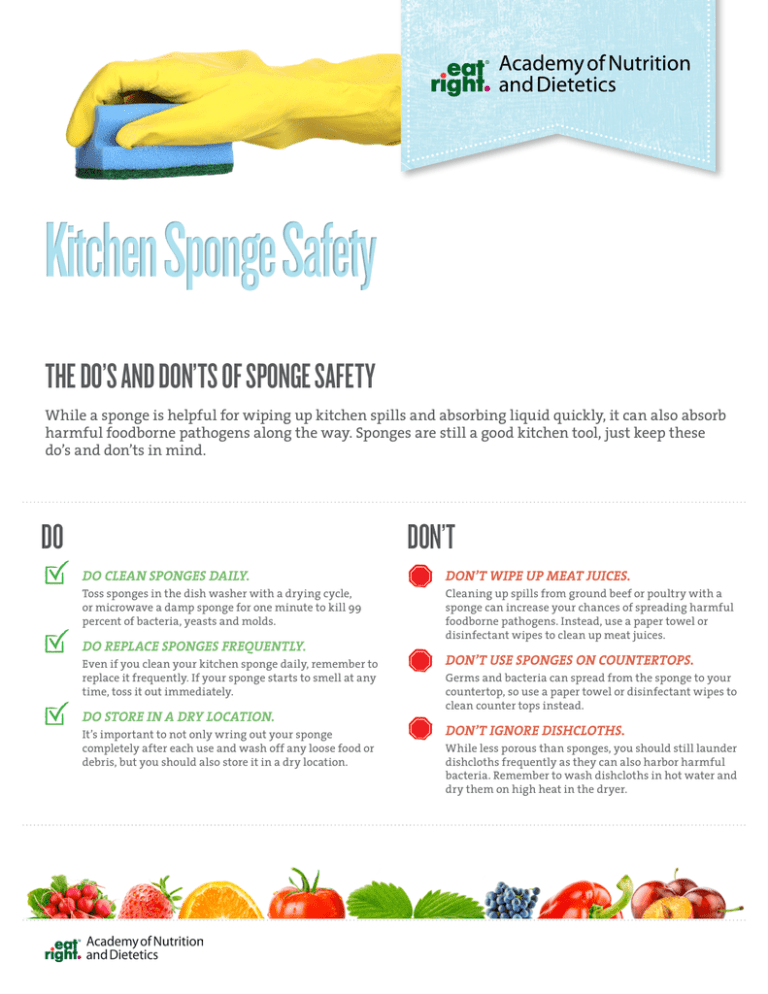The Kitchen Sponge Safety Guide
advertisement

Kitchen Sponge Safety THE DO’S AND DON’TS OF SPONGE SAFETY While a sponge is helpful for wiping up kitchen spills and absorbing liquid quickly, it can also absorb harmful foodborne pathogens along the way. Sponges are still a good kitchen tool, just keep these do’s and don’ts in mind. DO DON’T DO CLEAN SPONGES DAILY. Toss sponges in the dish washer with a drying cycle, or microwave a damp sponge for one minute to kill 99 percent of bacteria, yeasts and molds. DO REPLACE SPONGES FREQUENTLY. Even if you clean your kitchen sponge daily, remember to replace it frequently. If your sponge starts to smell at any time, toss it out immediately. DO STORE IN A DRY LOCATION. It’s important to not only wring out your sponge completely after each use and wash off any loose food or debris, but you should also store it in a dry location. DON’T WIPE UP MEAT JUICES. Cleaning up spills from ground beef or poultry with a sponge can increase your chances of spreading harmful foodborne pathogens. Instead, use a paper towel or disinfectant wipes to clean up meat juices. DON’T USE SPONGES ON COUNTERTOPS. Germs and bacteria can spread from the sponge to your countertop, so use a paper towel or disinfectant wipes to clean counter tops instead. DON’T IGNORE DISHCLOTHS. While less porous than sponges, you should still launder dishcloths frequently as they can also harbor harmful bacteria. Remember to wash dishcloths in hot water and dry them on high heat in the dryer.


